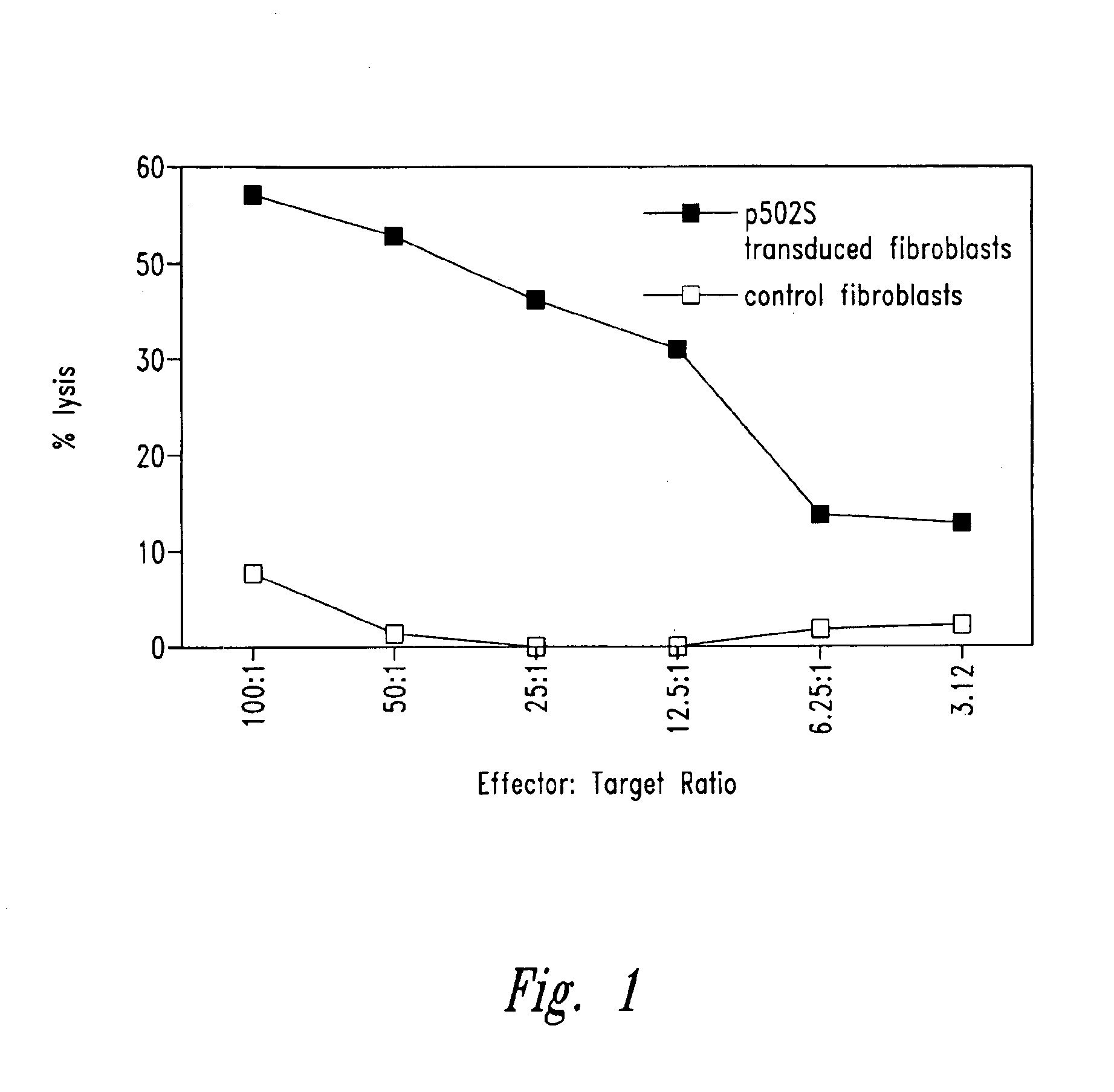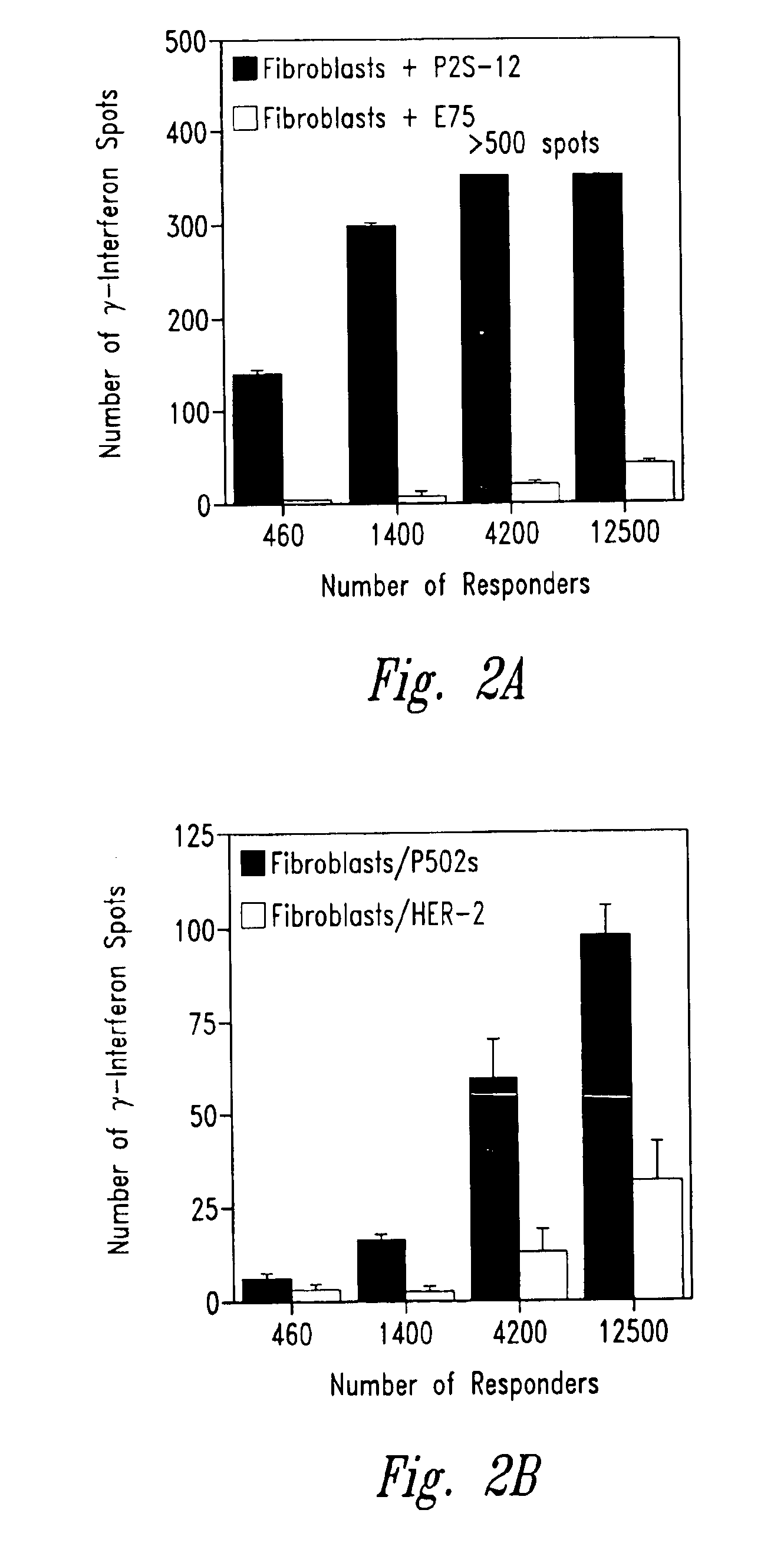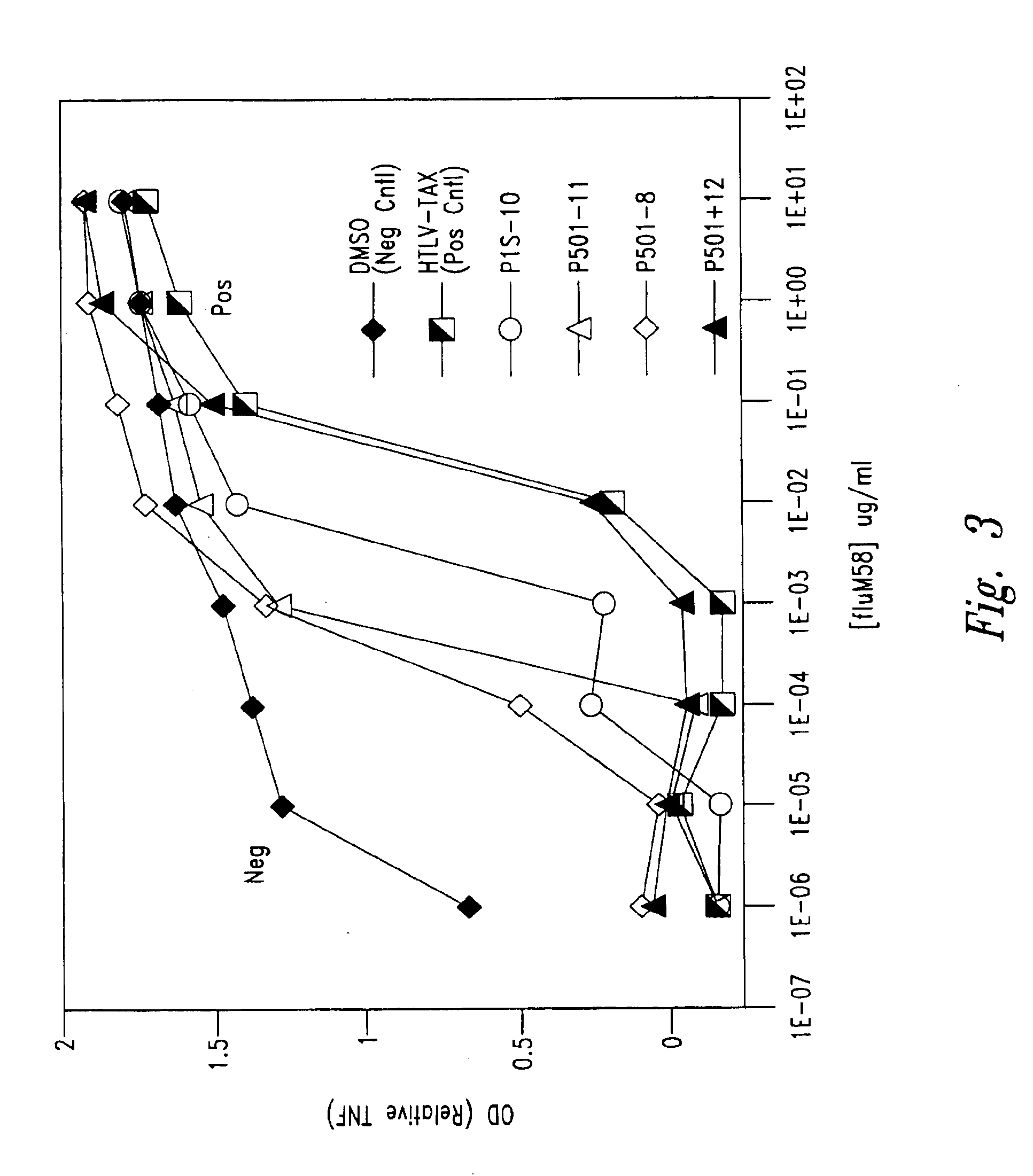Compositions and methods for the therapy and diagnosis of prostate cancer
a technology for prostate cancer and composition, applied in the field of cancer treatment and diagnosis, can solve the problems of insufficient treatment, no vaccine or other universally successful method of prevention or treatment is currently available, and the current therapies, which are generally based on a combination of chemotherapy or surgery and radiation, continue to prove inadequate in many patients, etc., to enhance the expression, purification and/or immunogenicity of polypeptides
- Summary
- Abstract
- Description
- Claims
- Application Information
AI Technical Summary
Benefits of technology
Problems solved by technology
Method used
Image
Examples
example 1
Isolation and Characterization of Prostate-specific Polypeptides
[0942]This Example describes the isolation of certain prostate-specific polypeptides from a prostate tumor cDNA library.
[0943]A human prostate tumor cDNA expression library was constructed from prostate tumor poly A+ RNA using a Superscript Plasmid System for cDNA Synthesis and Plasmid Cloning kit (BRL Life Technologies, Gaithersburg, Md. 20897) following the manufacturer's protocol. Specifically, prostate tumor tissues were homogenized with polytron (Kinematica, Switzerland) and total RNA was extracted using Trizol reagent (BRL Life Technologies) as directed by the manufacturer. The poly A+ RNA was then purified using a Qiagen oligotex spin column mRNA purification kit (Qiagen, Santa Clarita, Calif. 91355) according to the manufacturer's protocol. First-strand cDNA was synthesized using the NotI / Oligo-dT18 primer. Double-stranded cDNA was synthesized, ligated with EcoRI / BAXI adaptors (Invitrogen, San Diego, Calif.) and...
example 2
Determination of Tissue Specificity of Prostate-specific Polypeptides
[0964]Using gene specific primers, mRNA expression levels for the representative prostate-specific polypeptides F1-16, H1-1, J1-17 (also referred to as P502S), L1-12 (also referred to as P501S), F1-12 (also referred to as P504S) and N1-1862 (also referred to as P503S) were examined in a variety of normal and tumor tissues using RT-PCR.
[0965]Briefly, total RNA was extracted from a variety of normal and tumor tissues using Trizol reagent as described above. First strand synthesis was carried out using 1-2 μg of total RNA with SuperScript II reverse transcriptase (BRL Life Technologies) at 42° C. for one hour. The cDNA was then amplified by PCR with gene-specific primers. To ensure the semi-quantitative nature of the RT-PCR, β-actin was used as an internal control for each of the tissues examined. First, serial dilutions of the first strand cDNAs were prepared and RT-PCR assays were performed using β-actin specific pr...
example 3
Isolation and Characterization of Prostate-specific Polypeptides by PCR-based Subtraction
[0976]A cDNA subtraction library, containing cDNA from normal prostate subtracted with ten other normal tissue cDNAs (brain, heart, kidney, liver, lung, ovary, placenta. skeletal muscle, spleen and thymus) and then submitted to a first round of PCR amplification, was purchased from Clontech. This library was subjected to a second round of PCR amplification, following the manufacturer's protocol. The resulting cDNA fragments were subcloned into the vector pT7 Blue T-vector (Novagen, Madison, Wis.) and transformed into XL-1 Blue MRF' E. coli (Stratagene). DNA was isolated from independent clones and sequenced using a Perkin Elmer / Applied Biosystems Division Automated Sequencer Model 373A.
[0977]Fifty-nine positive clones were sequenced. Comparison of the DNA sequences of these clones with those in the gene bank, as described above, revealed no significant homologies to 25 of these clones, hereinaft...
PUM
 Login to View More
Login to View More Abstract
Description
Claims
Application Information
 Login to View More
Login to View More - R&D
- Intellectual Property
- Life Sciences
- Materials
- Tech Scout
- Unparalleled Data Quality
- Higher Quality Content
- 60% Fewer Hallucinations
Browse by: Latest US Patents, China's latest patents, Technical Efficacy Thesaurus, Application Domain, Technology Topic, Popular Technical Reports.
© 2025 PatSnap. All rights reserved.Legal|Privacy policy|Modern Slavery Act Transparency Statement|Sitemap|About US| Contact US: help@patsnap.com



